Trip Logs
Cruising the Seychelles & Coastal Tanzania Trip Log: March 1–14, 2024
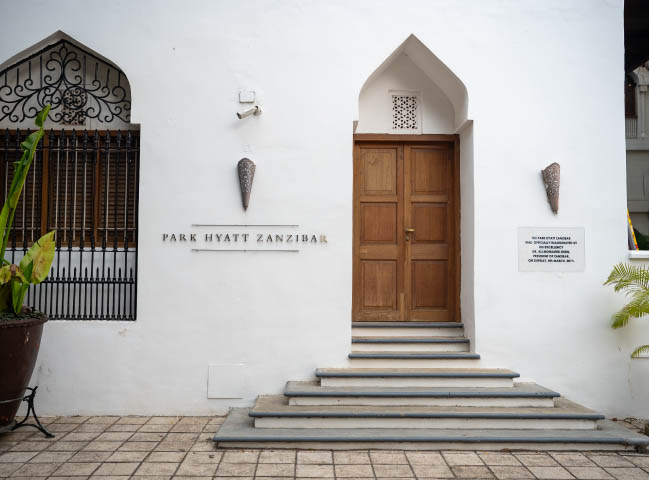
March 1, 2024 | Zanzibar, Tanzania
We gathered in Zanzibar from all corners of the globe, some arriving from overseas, others from a wildlife-rich, pre-expedition safari in the Serengeti. Settling into our seaside hotel, we took in the breathtaking sunset as vessels sailed about and children noisily frolicked in the shallows.
Over welcome drinks and dinner, our Expedition Leader Brad Climpson prepared us for the day ahead — an exploration of Zanzibar.
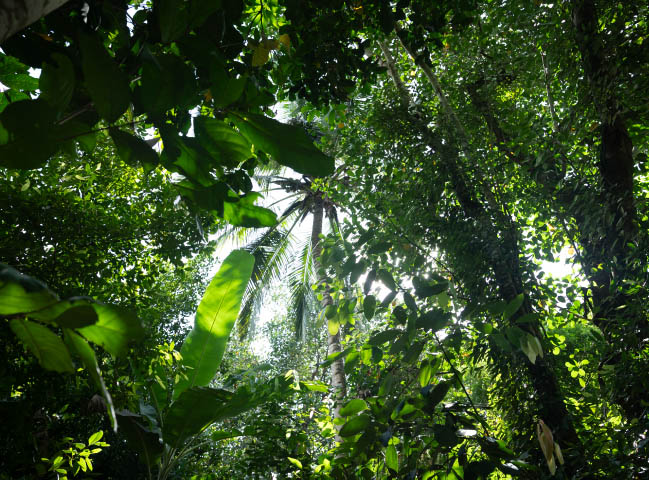
March 2, 2024 | Zanzibar
It was hot and humid as we set off to see the bustling city and vibrant countryside of Zanzibar Island, learning about its history and culture from our knowledgeable guides.
Arriving at Jozani-Chwaka National Park, we walked through lush, swamp-like Jozani Forest, encountering Sykes' monkeys, a tree squirrel and — at a nearby guava plantation — critically endangered red colobuses. Entertaining us at close range, they gave photographers great material. From there, we strolled along a raised wooden walkway into an extraordinary mangrove forest, where we observed the plants’ dense root systems and flexible trunks. Buffered against tides and storms, they offer a haven for fish and crustaceans.
At a garden fragrant with cinnamon, cloves, ylang-ylang, turmeric and nutmeg, we next learned about the international spice trade from a local expert. Used for cooking and wellbeing, spice exportation has underpinned the island’s economy for centuries.
Proceeding to Stone Town, we visited Anglican Christ Church and the city’s former slave market, a poignant reminder of the past. From there, we passed the Old Fort, where outdoor concerts are held.
Amid rainy conditions, some of us opted for an early lunch, while others wandered the lively streets with our local guide. After regrouping at the hotel, we transferred to our floating home, ‘Le Champlain.’ Setting sail, we met our Expedition Team and sat down to our first dinner aboard.
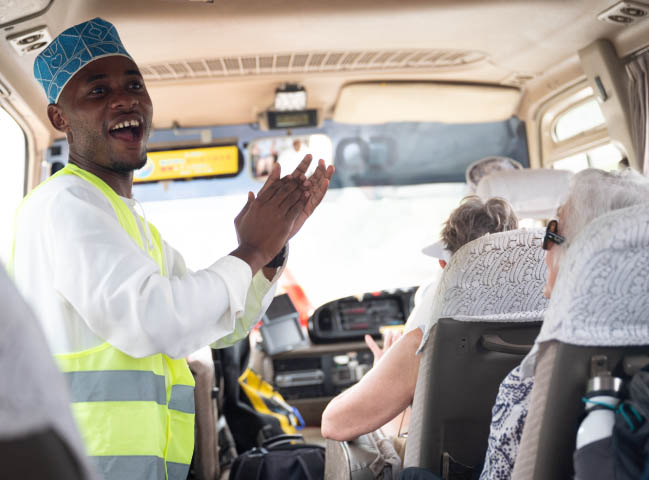
March 3, 2024 | Pemba Island
Overnight, we sailed northward to Pemba Island, known for its lush, green hills and clove plantations.
Anchoring off Mkoani, our modern luxury cruiser stood in stark contrast to surrounding vessels. Reaching the shore by Zodiac, we proceeded through the hilly countryside en route to Mbuzini Primary School, which is supported by A&K Philanthropy. After a warm, joyful welcome, young
children sang in the courtyard. We visited their classroom and learned about teachers’ strategies to keep students engaged.
Later, at a rural spice farm, we gained an appreciation of the plants’ scents, flavors and uses. Capping the enriching day, we stopped by the daytime roost of an extraordinary, rare creature — the Pemba flying fox. Endemic and exclusive to the island, the pollinators hung from trees and flew about in search of shade. Key to the local ecosystem, they set off at dusk to forage for fruit, flowers and other plants.
Back aboard ‘Le Champlain,’ we cooled by the pool or relaxed inside our luxurious ship as lush, green Pemba Island shrank slowly in our wake. Then, photo coach Nicole Dreon offered tips for the days ahead.
This evening, we donned fine attire, joining Captain Ludovic Provost and his crew for a gala welcome dinner.
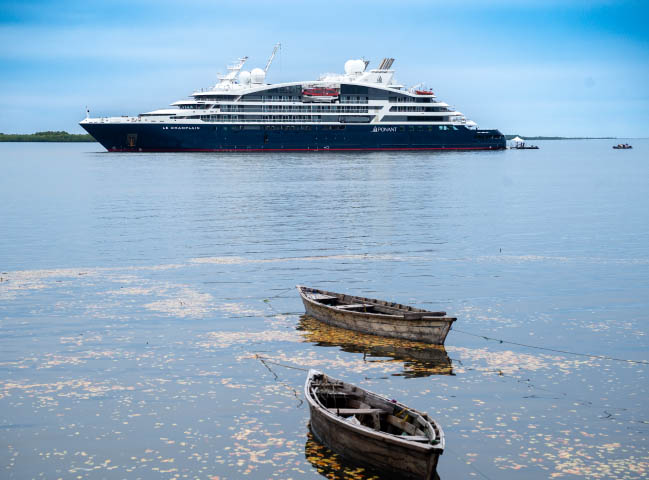
March 4, 2024 | Kilwa Kisiwani
On calm seas, we cruised southward overnight, waking to a relaxing morning stretch class before joining our resident ornithologist, Mark Brazil, for a talk on tropical seabirds. After a briefing about the afternoon’s destination — historic Kilwa Kisiwani, a UNESCO World Heritage Site — we made our way ashore by Zodiac, where we were warmly greeted by locals with song and dance.
Founded in the late 10th century by Arabic and Persian settlers, it was among the most active commercial centers on Africa’s east coast. From the 13th to the 16th century, Kilwa’s merchants dealt in gold, silver, pearls, Arabian crockery, Chinese porcelain, Persian earthenware and perfumes. Much of the trade occurring in the Indian Ocean ultimately passed through their hands. Kilwa Kisiwani minted its own currency from the 11th to 14th centuries. In the 16th century, the Portuguese established a fort on Kilwa Kisiwani. Declining in importance, it was eventually abandoned.
As birds soared overhead, we strolled through the ruins of ancient mosques and fortresses, picturing the former Islamic city-state at its height as a powerful, diverse hub of international commerce.
Returning to our ship, we continued eastward toward the Seychelles, anticipating the adventures ahead and readying for a day at sea.
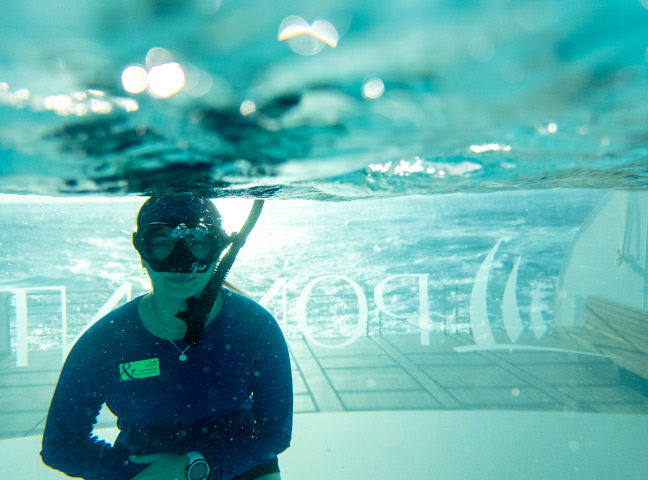
March 5, 2024 | At Sea, Cruising to the Seychelles
The relaxing day began with another stretch yoga session by the pool. Elsewhere on the ship, some observed colorful seabirds, including the red-footed booby.
We then joined our resident biologist, Andi Laidlaw, for a talk on marine life in the Seychelles. After learning about the impact of invasive species on the remote archipelago, we received an informative — and entertaining — snorkeling demonstration, preparing us for the activities ahead.
Later, we joined Seychelles’ resident Gemma Jessy, our cultural lecturer, for an enriching talk on island music. Next, our photo coach offered tips on smartphone photography.
Upon indulging in afternoon tea with mille-feuille in the main lounge, naturalist and scuba guide Tom Hiney discussed the conservation successes of the western Indian Ocean.
Concluding the enriching day at sea, we were entertained by live, Hollywood-themed song and dance, courtesy of our talented onboard performers.
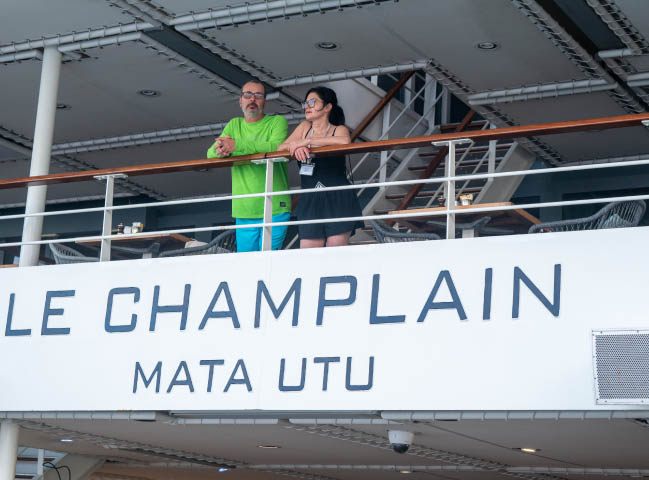
March 6, 2024 | Assumption Island, Seychelles
At daybreak, we approached Assumption Island as the tropical sunrise glowed through the vegetation silhouetted ashore. First recognized on August 14, 1756, the island was named after the Feast of the Assumption of Mary, which occurred the following day.
After clearing immigration, we set off by Zodiac to our snorkel site. Countless species filled the water, suspended like prismatic gems reflecting in the light. Among the rainbow’s-worth of sightings were butterflyfish, triggerfish, chromis and Moorish idol.
After our short — but kaleidoscopic — snorkeling session, we returned to the ship and proceeded to the Aldabra Atoll. During the passage, our photo coach shared helpful camera and photography tips for capturing the beauty at hand.
Arriving at UNESCO-designated Aldabra — one of the world's largest coral atolls — experts from the island’s research station gave an overview of what to expect. We then boarded Zodiacs to cruise channels between sharply eroded, raised coral terraces, some shaped like mushrooms and covered with vegetation.
Brown noddies, black-naped terns and red-tailed tropicbirds soared around us or perched, unbothered, in trees overhanging the water. Malagasy turtle doves and Comoro blue pigeons flitted overhead; souimanga sunbirds sang; and fish, rays and turtles were visible in the clear, turquoise water.
As a rain squall approached the enormous lagoon, we retreated to enjoy a luxurious afternoon and evening aboard ‘Le Champlain.’
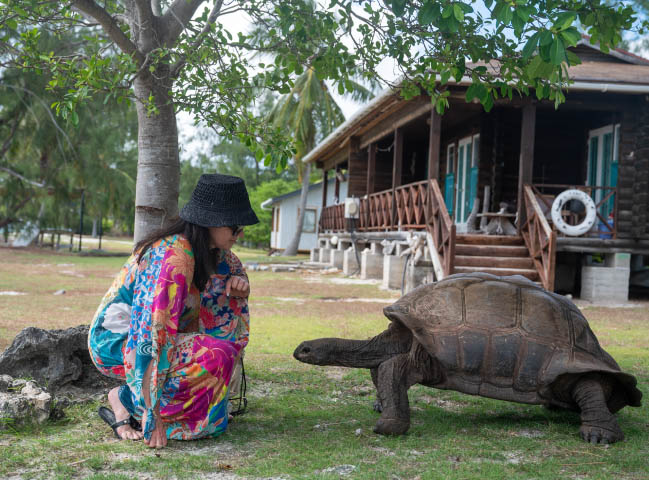
March 7, 2024 | Aldabra Atoll
During our morning Zodiac cruise into the main channel, which drains the island’s enormous lagoon, an abundance of birds soared overhead. Gliding, kleptoparasitic frigatebirds with angled, narrow wings; forked tails; and slender, hook-tipped beaks appeared prehistoric and pterodactyl-like. Threaded between them were elegant, red-footed boobies. We watched and cheered when boobies escaped with their meals intact. Scores of brown noddies took flight as we neared the raised coral island. There, white terns chattered, displayed and even mated before us.
During a mesmerizing snorkel session, we marveled at the coral reef’s diversity and extraordinary architectural detail. A multitude of fish swam amid the richly textured, multi-hued limestone background. Some of us saw rays; others spotted turtles. Everyone had an amazing time in the water, warmed by the tropical sun.
Even more delights awaited this afternoon as we stepped ashore near the island’s research station. Disembarking onto the white, coral-sand beach backed by casuarina trees and coconut palms, we set off on walks. Some chose the longer “back path,” while others strolled to La Gigi, a small promontory. Both routes revealed endemic wildlife, such as the Aldabra flying fox, fody, white-eye and ancient giant tortoise, as well as butterflies, geckos and plant life found nowhere else. Meanwhile, tiny, flightless white-throated rail searched for food in leaves beneath trees.
After a quick swim in the shallow, crystal-clear water, we returned to our floating home, in awe of what we saw.
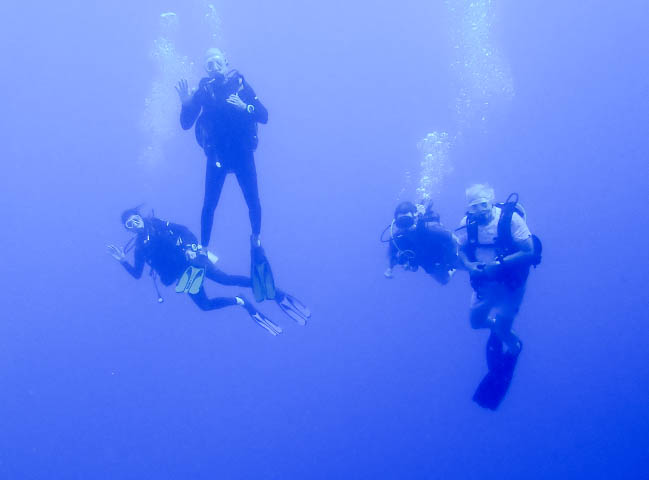
March 8, 2024 | Astove Island
The teardrop-shaped, raised coral island of Astove is fringed by a reef with a steep drop-off, an abrupt border between marine ecosystems. This morning, we set off to explore a snorkel site along its boundary “wall.”
On the inner side were shallows of the multi-hued reef, where a biodiverse proliferation of fish and the occasional turtle could be seen. Beyond, the beach was stippled with palms and casuarinas.
The drop on the outer side of the reef deepened its blue hue until we could no longer discern depth. Divers ventured deep to view turtles and vast schools of fish.
In the afternoon, we went ashore. Some relaxed on the beach; swam in the shallows; or walked in search of the local wildlife, seeing warblers, white-eyes and sunbirds. As the temperature began to dip, giant tortoises emerged from shaded bushes like reptilian tanks, reclaiming their ancient foraging grounds.
To round out our afternoon, we enjoyed refreshments on the beach. Overnight, we will travel 200 nautical miles eastward en route to the Farquhar Atoll.
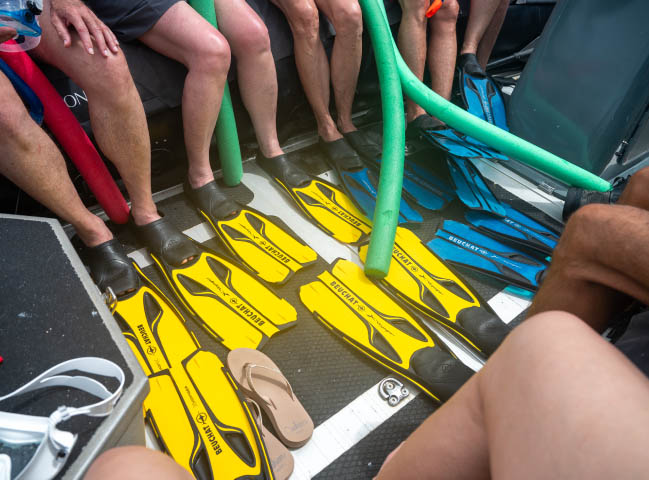
March 9, 2024 | Farquhar Atoll
After a morning stretch and yoga session, our enrichment talks began. First was a discussion on the islands’ biodiversity, isolation and endemic species, followed by a lesson on marine food webs.
Arriving at the uninhabited Farquhar Atoll, we boarded our Zodiacs and headed to a snorkel site, where fish, turtles and sheer beauty were key attractions. Just being in the water was divine. Later, we wandered ashore, beachcombing, birdwatching or simply relaxing in the pristine water with a cold drink in hand.
Back aboard ‘Le Champlain,’ we sat down to dinner, followed by a game of “Call My Bluff.” Tomorrow, we will arrive at the St. François Atoll, 200 nautical miles to the north.

March 10, 2024 | Alphonse Island
As we continued northward, our naturalist and scuba guide lent deep insight into the ocean’s mysteries. Next, our cultural expert revealed the importance of the coconut palms that grow on the islands.
Arriving at Alphonse Island for our afternoon activities, we set off to snorkel and dive in the warm lagoon, thankful for the gentle current. Swarms of fish swam around the coral outcrops that rose from the lagoon floor. Divers had great visibility as they viewed healthy coral, a huge green turtle, moray eels, schools of humpback red snapper, sweetlips and huge, spiny lobsters.
On the shore, we saw firsthand the coconut palms and germinating coconut seeds we learned about earlier. We then lingered near the beach bar, sipping cooling drinks; swam near the shore; or explored further, wading around the tip of the island to reach a trail. Along it, we saw a colony of wedge-tailed shearwaters, some hiding deep in their nesting hollows. They typically emerge at night, returning to bring food to their chicks.
As we returned to the ship, a squall obscured the St. François Atoll, which we had planned to visit. Remaining flexible, our Expedition Team quickly pivoted and we enjoyed a relaxing — and dry — evening aboard.
As we made our way toward Poivre and St Joseph's Atoll, we sat down to a lovely dinner, followed by a rousing game of trivia.
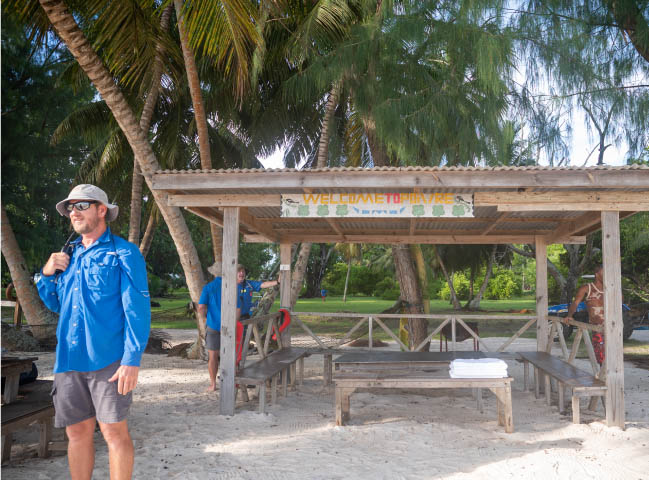
March 11, 2024 | Poivre Island & St. Joseph Atoll
This morning, we arrived at Poivre Island, named in 1771 by Chevalier de la Biollière after Pierre Poivre, the governor of Ile de France and Réunion, who introduced spice cultivation to the island.
Once ashore, we strolled with our naturalists. Wandering as far as the island’s grass airstrip, we spotted migratory shorebirds and large crabs, which burrowed into the coral rubble.
Back aboard our vessel, ‘Le Champlain’ continued to the St. Joseph Atoll while we enjoyed a talk on unique avian sounds. We then separated into dive and snorkel teams and explored the tropical water. Frigatebirds and white terns flew overhead. Below the waves were turtles, rays, an array of colorful fish and even a few small sharks.
Our day concluded with an indulgent caviar station; pre-dinner cocktail hour; and throwback disco performance.
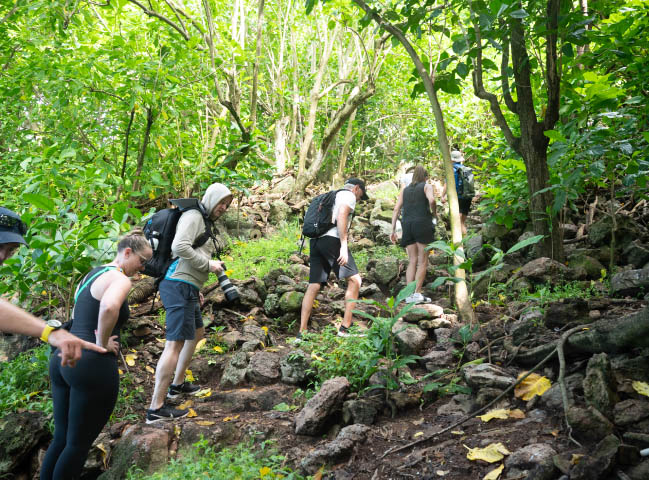
March 12, 2024 | Aride Island & Praslin Island
Arriving at Aride, the northernmost granitic island in the Seychelles, its conservation efforts were immediately apparent. In 1973, Christopher Cadbury purchased Aride for the Society for the Promotion of Nature Reserves (now the Royal Society of Wildlife Trusts) and it was declared a Special Reserve under Seychelles law in 1979.
We observed many white terns flying overhead; dashing through the forest; visiting nest sites; and tending to chicks at various stages of growth. Continuing onward, we spotted endemic species like the Seychelles fody, warbler and sunbird — as well as one of seven remaining Seychelles magpie-robins. Meanwhile, white-tailed tropicbirds nestled in hollows or between the buttresses of trees; skinks skittered about; and giant millipedes moved in a wavelike motion across the forest floor.
We then proceeded to breathtaking Anne Lazio Beach on Praslin Island. After a brief tropical storm, we spent time swimming and snorkeling in the warm seawater. Sipping cooling drinks from an impromptu beach bar, we marveled at the massive, rounded boulders, which offered a stark contrast to the white coral beach.
This evening, we dressed for our Captain’s farewell cocktail party and gala dinner, anticipating tomorrow — our final full day in the Seychelles.
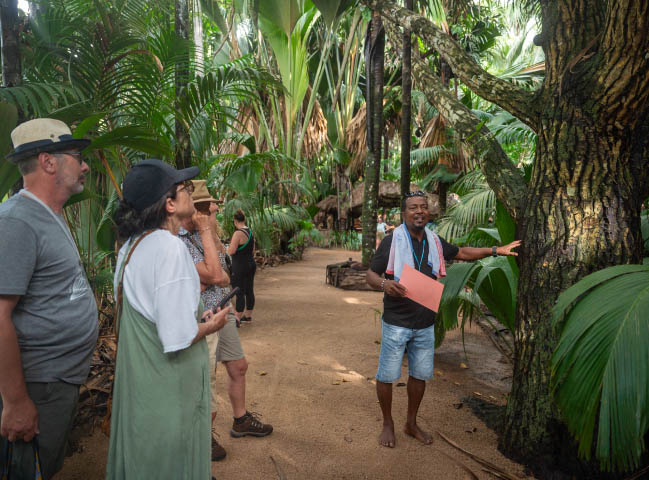
March 13, 2024 | Praslin & La Digue Islands, Seychelles
As our journey neared its end, we continued exploring the Seychelles’ second-largest island, Praslin, where we visited the Garden of Eden. Biologically diverse, verdant and filled with endemic flora, it was easy to see why British General Charles Gordon likened it to the biblical locale.
We marveled at rare coco de mer palm trees, bearing the largest — and heaviest — seed on earth. Geckos fought over territory on their trunks, while indigenous birds flitted through the canopy formed by their enormous fronds. Some saw and even photographed the Seychelles black parrot — among the world’s rarest birds.
After returning to our vessel, we continued to La Digue Island. Boarding our Zodiacs one final time, we went ashore. Some explored the tiny shops, bars and cafés. Others traversed the island by bicycle or hopped aboard a local, canopied truck to reach dazzling Anse Source d'Argent. The powder-white beach — a narrow strip of breathtaking beauty — was lapped by shallow turquoise water; offset by striking, immense boulders; and enveloped by the sound of rustling palms.
As we returned to ‘Le Champlain’ after another unforgettable day, a tropical downpour washed our footprints clean.
Reflecting on past days of wonder, our photo coach shared a visual presentation of our journey. We then joined our Expedition Leader in thanking the incredible team for a superb sojourn.
Tomorrow, we must say farewell and disembark — a sad day for us all.
 The Americas
The Americas Europe, Middle East and Africa
Europe, Middle East and Africa Australia, NZ and Asia
Australia, NZ and Asia





























































































































































































































































































































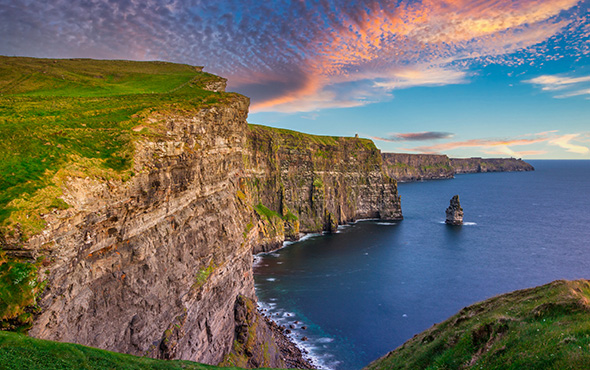




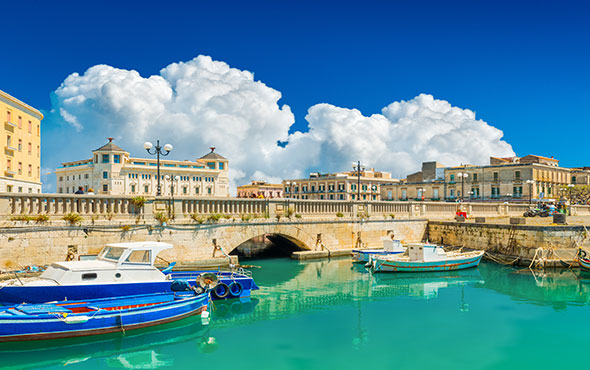



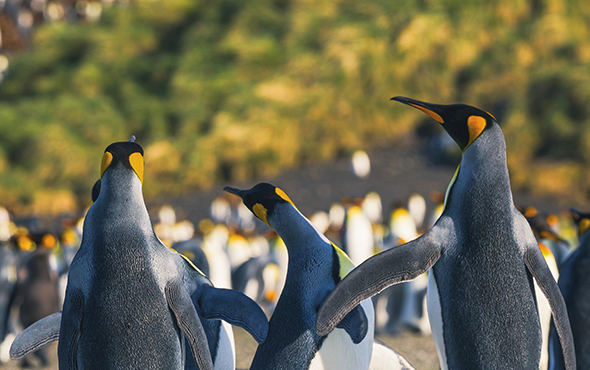
 The Americas
The Americas
 Europe, Middle East and Africa
Europe, Middle East and Africa Australia, NZ and Asia
Australia, NZ and Asia